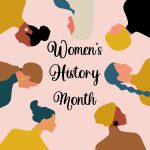And the last area from Pew Research’s latest study on women and childlessness: Comparing childless women with those who have borne children. The study looked at differences in marriage, education, and race. “There are dramatic differences by marital status ..
..between women ages 40-44 who have borne children and those who have not, and some differences by race and educational attainment.”
On the marriage front, more mothers ages 40-44 had ever been married than childless women of the same age: 93% of mothers were or had been married, while 60% of childless women were or had been married.
More childless women ages 40-44 had never been married: 40% of childless women in this age range had never been married as opposed to only 7% of mothers.
On education attainment, more childless women ages 40-44 have a bachelor’s degree or higher: 29% of mothers have a bachelor’s degree or higher, and 39% of childless women have this degree or higher. Thirteen percent of childless women have a Master’s or higher, as opposed to 9% of mothers.
On race, the biggest differences are with whites: in the same age range, 40-44, 66% of white women are mothers, and 71% are not. On other ethnicities: 14 % of black women have children and 12 % do not. The same goes for Hispanics. Asian women are close: 6% are mothers, 5% are not.
In a nutshell, the numbers seem to mirror past research–in the 40-44 age range, when compared to women who are mothers, childless women are less likely to have ever been married or never married at all, tend to have more education, and be white.
With upcoming generations, I am curious to see how these numbers will change. More women are not getting married. More are having children out of wedlock. More are getting higher education. According to the Population Reference Bureau in 2005, “about 43 percent of women ages 18 to 24 were enrolled in college, compared with 35 percent of young men. Between 1970 and 2005, the gender composition has shifted to the extent that women now make up the majority—54 percent—of ..young adults enrolled in college.”
Of parts I-V, what aspects of Pew’s study do you find most interesting? Disturbed by? Encouraged by?
Me, I am curious about the overall numbers. Childless numbers (for women 40-44) may have increased overall in the big picture over the last 25-30 years, but in the last ten have stayed about the same. Will these numbers “level out” at about 1 in 5 women, and even then, will voluntary/temporary/involuntarily aspects of this 1 in 5 ever be more seriously studied?
I also want to watch the trend of women 40-44 starting to have kids. If this continues, the Census may very well need to push their standard age higher when looking at childlessness. Either that or get more specific about intent.
I also predict that as education levels rise across race, we will see more increases in “childlessness” on this channel. I don’t want to believe it will remain more of “white” phenom. But this boils down to education, and women of all races being able to attain it at higher levels.
You?



The trend of increased prosperity and decreased size of household still, statistically, rings true. But, the promise of increased prosperity with increases in education seems not to have done well! After watching http://www.womensmediacenter.com/ and hearing that women need more education just to get “even” in terms of finances resonated with me. This trend, coupled with lack of access to reproductive care, regardless of income level seems to be the perfect poisonous brew for women – moms, moms who wish they were not, and the dedicated childfree alike!
So, for me, the thing that irks is that the promise of economic prosperity both nationally and internationally has been out there for decades but the trend of prosperity across race and age has not partnered up with the socio-political freedom to be childfree nor with access to healthcare to make it happen. I would like to think that the “whiteness” of the data will dissipate but, given power structures and politics and these data sets, I think that women need to start acting up more on the reproductive rights front for that to materialize!
You’re right on in terms of women needing more education just get “even” in terms of finances and this has been the case for some time now regardless of race. Women still get paid less than men for doing the same work. I do think that as education levels rise across race, which seems to be happening–see
http://www.npr.org/templates/story/story.php?storyId=128107185–it may not lead to propserity necessarily but definitely to more choices in life. ~L
While there is pay discrimination still happening, much of the stats on women being paid less are false. Women are often paid less because they go in and out of the workforce, usually to raise children. If I leave my field and have not been working in it for, let’s say, 5 years, why should I make the same amount as someone who has stayed in the field? Women, in general, are also still choosing lower paying professions than men.
Hey thanks for the info–do you have referrals to stats or research for women going in and out of workforce affected pay, choosing occupations with lower pay, etc. I would be interested in seeing that. I have seen studies where the same amt of knowledge, skills and experience still = less pay for women, there are always more studies to learn from to be sure…~L
This has some references (women work part-time, leave the job force frequently, etc) and it also shows that some of the wage gap is unexplained: http://www.gao.gov/new.items/d0435.pdf
Some info here that women often take jobs that pay less so that they can spend more time w/their family and they are absent more frequently: http://fazeer.wordpress.com/2009/09/14/why-do-women-earn-less-than-men/
This article has info on women being more likely to go into careers that pay less and it shows some interesting data on people who had gender reassignment surgery: http://www.time.com/time/nation/article/0,8599,1983185,00.html
I hope these links help some. There is also some research out there that women and men are mostly equally paid until the pay reaches the $100K mark, then men are much more likely to be paid more than women. I have a friend who is in HR. She told me once that men she hires will negotiage for more money more often than women. I have also seen research that boys are more likely to negotiate with parents and other authority figures at a young age, so maybe this is something inborn? (Here’s a story about women and men negotiating at work: http://equalitymyth.com/post/484627384/kristof-the-boys-have-fallen-behind-but-what-about).
I hope no one reads my comments and thinks that I believe that women are always being treated equally at work (they are definitely not) or that I agree with unfair pay. In fact, I am one of those women who went into teaching (low paying!!), not for the money but because I love what I do.
Thanks, Alex for passing these on–I will check them out! ~L
Ran across a related article re women and wages: http://www.huffingtonpost.com/pauline-millard/women-money-and-how-it-af_b_663093.html
“..economic playing field more equal than it has ever been and women earning the majority of four year degrees. The Labor Department released a study in July of this year that reported that the wage gap between men and women, particularly among people in their 20s, was shrinking tremendously.”
But it’s not that simple…check out the article!
~L